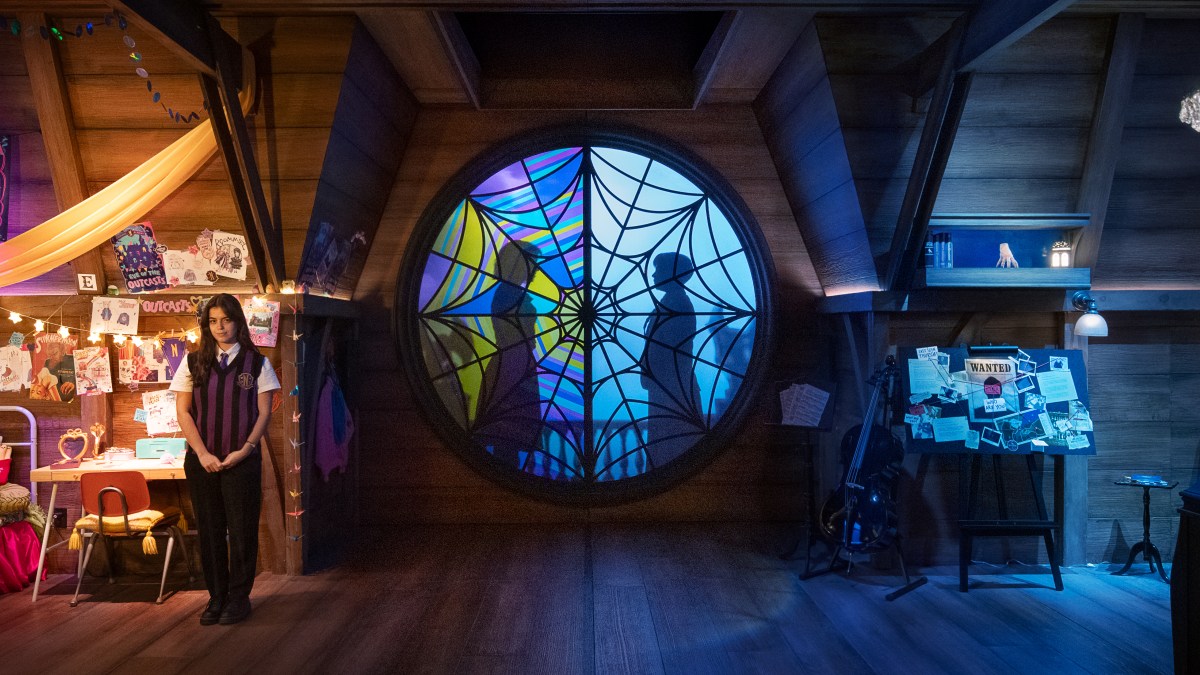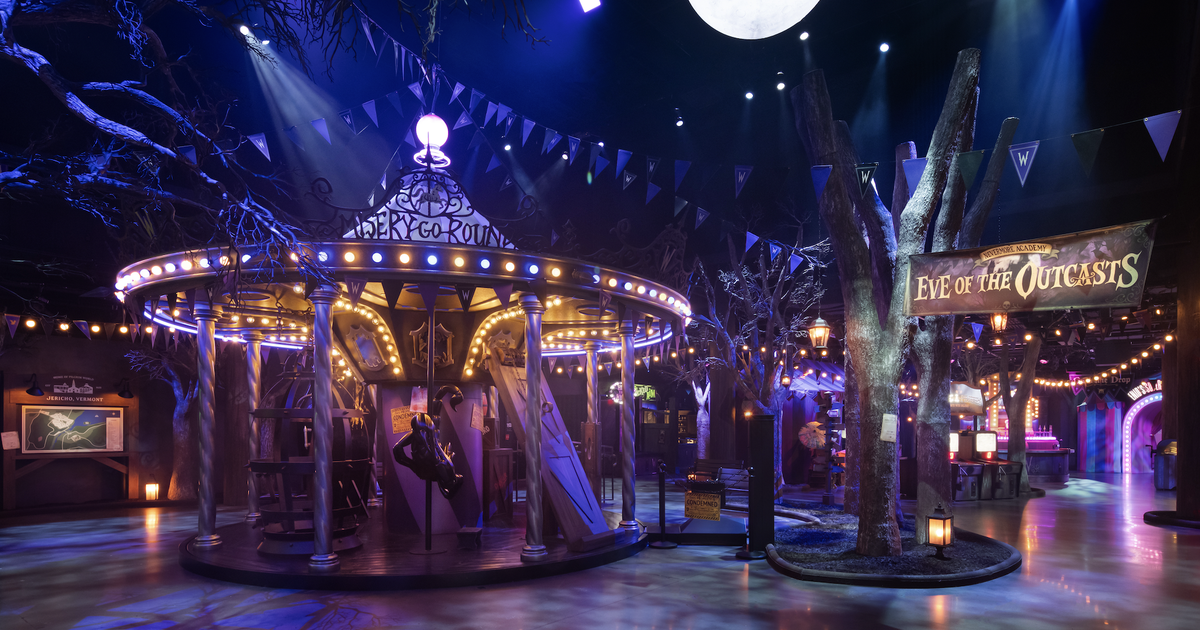The Dawn of a New Era: Netflix Goes Physical
In a bold move that redefines the battlegrounds of the streaming wars, Netflix has thrown open the doors to its first ‘Netflix House’ at the King of Prussia Mall, a colossal testament to retail resilience on the fringes of Philadelphia. This isn’t just another pop-up shop; it’s a sprawling, over 100,000 square-foot immersive entertainment hub, transforming former retail space into a vibrant, living tribute to the content juggernaut. It’s a statement, loud and clear, that for Netflix, the future isn’t just about what’s on your screen, but where you stand.
The grand opening was a spectacle, an explosion of LED lights and theatrical flair that immediately lived up to the considerable hype. Stepping inside, visitors are immediately enveloped in a world meticulously crafted to bring their favorite Netflix series to life. From the moment the front door swung open in the windswept suburb, it became clear that this venture transcends traditional retail, pushing the boundaries of what a brand can be in a physical manifestation. It’s an audacious gamble, converting digital escapism into tangible adventure, and it feels both utterly bizarre and brilliantly innovative.
The sheer scale of Netflix House is breathtaking, occupying a footprint typically reserved for anchor department stores. This strategic acquisition of prime mall real estate speaks volumes about Netflix’s intent: to create a destination, not merely an attraction. The ‘garish props’ and ‘many TV-themed attractions’ mentioned in early reports are not just set dressings; they are gateways to interactive narratives, carefully curated to evoke deep nostalgia and excitement for series ranging from the chilling depths of ‘Stranger Things’ to the opulent balls of ‘Bridgerton’ or the nerve-wracking challenges of ‘Squid Game’. It’s a sensory overload in the best possible way, designed to leave an indelible impression long after the visit concludes.
Beyond the Screen: Immersive Experiences and Branded Worlds
What exactly does ‘immersive experience’ mean when Netflix is at the helm? It means you don’t just watch a show; you literally walk into it. Imagine navigating a replica of the Red Light, Green Light game from ‘Squid Game’ (minus the lethal consequences, thankfully), or dancing a waltz in a meticulously recreated Regency-era ballroom. These aren’t passive displays; they are carefully engineered environments designed for active participation, photo opportunities, and exclusive interactions that deepen a fan’s connection to their beloved franchises. Every corner holds a surprise, a subtle nod, or an overt tribute that rewards the loyal viewer.
- Step into iconic sets from fan-favorite series, from the Upside Down to the streets of Victorian London.
- Engage with interactive exhibits that challenge and entertain, blurring the lines between viewer and participant.
- Discover exclusive merchandise and themed culinary delights that extend the brand experience beyond the screen.
- Experience live performances and character interactions unique to the House, adding a dynamic, theatrical layer to the visit.
- Participate in scavenger hunts and themed escape rooms, designed to test knowledge and immerse visitors deeper into Netflix narratives.
The consumer expectation leading up to this opening was sky-high. Was it going to be another glorified merchandise store, or a truly groundbreaking entertainment venue? Initial reactions suggest it leans heavily towards the latter. It’s a living, breathing advertisement for Netflix’s intellectual property, a place where fans can not only consume but also inhabit the worlds they’ve come to adore. This tangible connection could prove invaluable in an increasingly competitive streaming landscape, offering a unique value proposition that digital platforms alone cannot replicate.
The Phoenix of Retail: King of Prussia Mall’s Unlikely Partner
The choice of location for the inaugural Netflix House is as strategic as it is symbolic. The King of Prussia Mall stands defiant against the ‘retail apocalypse’ narrative that has plagued shopping centers across the nation. It’s a fortress of commerce, a beacon of activity where other malls falter. By anchoring itself within such a resilient and high-traffic hub, Netflix isn’t just opening a new attraction; it’s making a profound statement about the future of retail itself. King of Prussia isn’t merely surviving; it’s evolving, and Netflix is a key part of its next chapter.
This partnership suggests a symbiotic relationship. Netflix gains access to a steady stream of diverse foot traffic, leveraging the mall’s existing infrastructure and drawing power. The mall, in turn, gains an unprecedented anchor tenant, a global entertainment giant capable of attracting visitors from far beyond its traditional catchment area. It’s a compelling model for revitalizing retail spaces, demonstrating that with innovation and collaboration, the brick-and-mortar landscape can indeed adapt and thrive in the digital age. This isn’t just about selling merchandise; it’s about selling an experience, a day out, a new reason to visit a physical location.
“The strategic pivot by Netflix into physical spaces like the King of Prussia House signals a profound re-evaluation of how digital entertainment giants cultivate brand loyalty and monetize intellectual property in an increasingly competitive landscape. It’s a bold gamble that could either redefine fan engagement or prove to be an expensive detour from their core business.”
Streaming Wars Take a Tangible Turn: Strategy and Stakes
Contextualizing Netflix House within the broader ‘streaming wars’ reveals a sophisticated strategy at play. Why would a digital-first company, renowned for its frictionless, at-home entertainment, invest massive capital in physical real estate? The answers are multi-faceted: diversification of revenue streams beyond subscriptions, enhanced customer retention through deeper brand immersion, new user acquisition (especially for those who might not yet be subscribers but are drawn by the physical spectacle), and the creation of highly shareable, viral content for social media – a potent, organic marketing tool.
However, the financial implications and risks are considerable. Operating a 100,000 square-foot physical venue entails massive overheads, staffing challenges, and operational complexities far removed from the agility of a digital platform. Is this a sustainable model, or a costly experiment driven by the imperative to constantly innovate? The success of Netflix House will undoubtedly influence other streaming giants, potentially ushering in an era where Disney+, HBO Max, and Amazon Prime Video also seek to establish their own physical brand sanctuaries. This isn’t just about content anymore; it’s about ecosystem dominance.
The concept of ‘brand sanctuaries’—places where fans can physically connect with their beloved franchises—is gaining traction. These spaces tap into an emotional desire for tangibility in an increasingly digital world. For many, Netflix House offers a chance to not just escape into a story, but to become a part of it, fostering a deeper, more personal connection that could translate into stronger brand loyalty and sustained viewership. It’s a clever way to re-engage an audience that might be feeling the fatigue of endless scrolling.
The Future of Fan Engagement: More Than Just a Show
Looking ahead, the potential evolution of these physical spaces is immense. Netflix House could become more than just an attraction; it could morph into a dynamic event venue, hosting exclusive premieres, fan conventions, or even acting as a testing ground for new content formats. Imagine early screenings with interactive elements, or meet-and-greets with show creators and stars. It’s a living, evolving canvas for brand engagement, a community hub for devoted fans that provides value beyond the initial ticket price. The possibilities for cross-promotion and content synergy are virtually limitless.
The demographic appeal of Netflix House is broad, targeting everyone from hardcore fans eager to dive deep into their favorite narratives to families looking for a unique outing, and casual visitors simply intrigued by the spectacle. It caters to different segments by offering a mix of high-energy interactive zones, more relaxed themed dining experiences, and extensive retail opportunities. The goal is to create a universally appealing destination that transcends age groups and prior levels of Netflix fandom, drawing in anyone curious about the intersection of entertainment and immersive experience.
Revisiting the initial reaction of ‘weird,’ it’s now clear that this ‘weirdness’ is precisely its strength. It’s weird in an audacious, innovative way that challenges preconceptions about what an entertainment company can and should be. It bridges the gap between the ephemeral nature of digital content and the enduring appeal of physical interaction. This tension between the digital and the tangible isn’t a flaw; it’s the very essence of Netflix House’s pioneering spirit, pushing the boundaries of experiential marketing and fan engagement into uncharted territory. The question is no longer ‘if’ digital brands will go physical, but ‘how’ effectively they will do it.
As the doors close on a day of spectacle at Netflix House, one truth remains undeniably clear: the future of entertainment isn’t just about what’s on your screen; it’s increasingly about where you stand, what you touch, and the immersive worlds you choose to inhabit, blurring the lines between pixels and tangible reality in a way we’ve only just begun to comprehend.


